
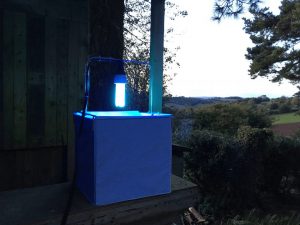
This moth trap is the first to be designed by and built at NHBS. It is built on the Skinner trap principle of a bulb suspended above a box, with sloping flaps descending from two sides to funnel moths into the body of the trap. The trap is very lightweight and portable and has been tested and approved by Butterfly Conservation. One unique feature of this trap is that it is clad entirely in white nylon material which amplifies the light level emitted from the single 20W blacklight bulb included in the kit. The trap electrics are supported by a stainless steel frame that is attached to the container walls, and the trap comes with a 4.5m power lead with a standard UK plug. When fully assembled the trap measures approximately 30cm wide x 30cm deep x 50cm tall and weighs around 2kg; much lighter than the typical solid plastic assemblies of other Skinner traps.
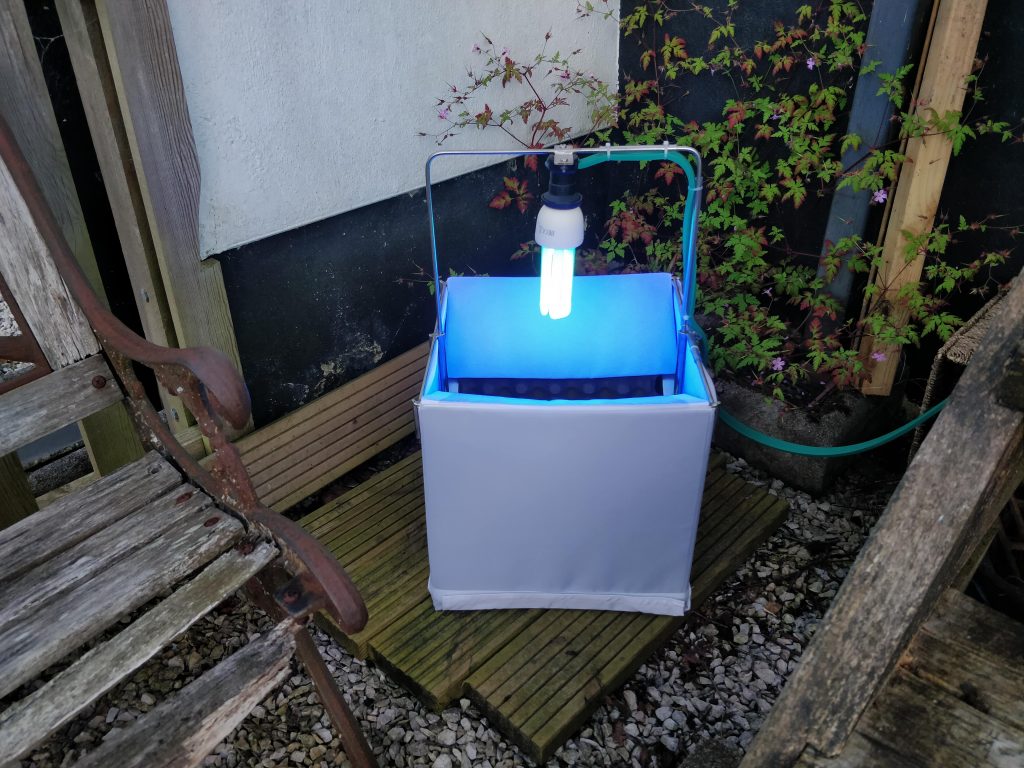
How we tested
I placed the trap in my small town centre garden for two nights in early July, checking first for favourable conditions (namely little to no chance of rain). Cloud cover can be good for moth catching, especially around a full moon. Moth species vary widely in their activity, some arriving at traps during dusk (such as crepuscular or day flyers) and some arriving well into the night. As such I put the trap out at around 9:30pm on both occasions while the day was fading and when the wind was low. I also made sure I wasn’t running the trap on two consecutive nights as I don’t have space to disperse trapped moths widely in the morning and I didn’t want to trap the same individuals two nights in a row. The trap was left on through the night in the corner of my garden, tucked out of view of my immediate neighbours, where it would also utilise the white walls of my house to maximise the light and landing space.
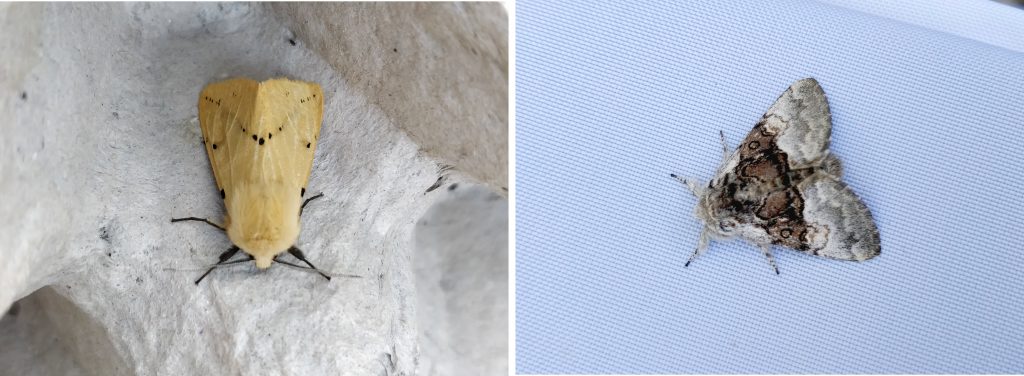
What we found
On both nights I found lots of moths inside the trap, as well as some specimens resting on the outside walls due to the white nylon coating; they remained there quite peacefully to ID. I also found that it was worth looking around the trap in the morning, as many species are attracted by the light and will land on nearby walls and foliage. The catch and retention rate seemed good for the conditions and I found this trap simple to run and fun to explore in the morning! The species found are listed below.
Species recorded
Nut-tree Tussock (Colocasia coryli)
Riband Wave (Idaea aversata)
Heart and Dart (Agrotis exclamationis)
Scorched Carpet (Ligdia adustata)
Marbled Minor (Oligia strigilis)
Buff Ermine (Spilosoma lutea)
Triple-spotted Clay (Xestia ditrapezium)
Grass Veneer (Chrysoteuchia culmella)
Common Plume (Emmelina monodactyla)
Uncertain (actual name – not me being unsure! – Hoplodrina octogenaria)
Bee Moth (Aphomia sociella)
Mottled Rustic (Caradrina morpheus)
Dwarf Cream Wave (Idaea fuscovenosa)
Eudonia lacustrata
Scoparia Sp.
Caddis fly Sp.
Summer Chafer Beetle (Amphimallon solstitiale)
Our opinion
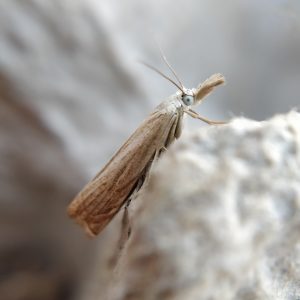
The NHBS moth trap is both lightweight and sturdy and is a breeze to set up. Simply attach the base to the walls of the trap using the Velcro strips, ensuring all of the velcro fixings are on the outside of the trap. Put some empty egg boxes inside the trap to give visiting moths some good nooks to safely rest in once inside (though some will just hang on the walls). Then slot the metal frames onto the lid of the box and rest the funnel slopes on them. The electrics slot into corresponding holes on either side of the metal frame. When disassembling the trap, always check around the framework for any hidden moths.
This is a great trap: competitively priced, bright, compact and neat and comes with a handy carry bag. It’s a perfect starting place if you’re just embarking on moth trapping for the first time and also great if you are travelling or plan to try trapping in a few places, as it really does pack down nicely.
The NHBS Moth Trap is available through the NHBS website.
To view our full range of moth traps, visit www.nhbs.com. If you have any questions on moth trapping or would like some advice on the trap for you then please contact us via email at customer.services@nhbs.com or phone on 01803 865913.

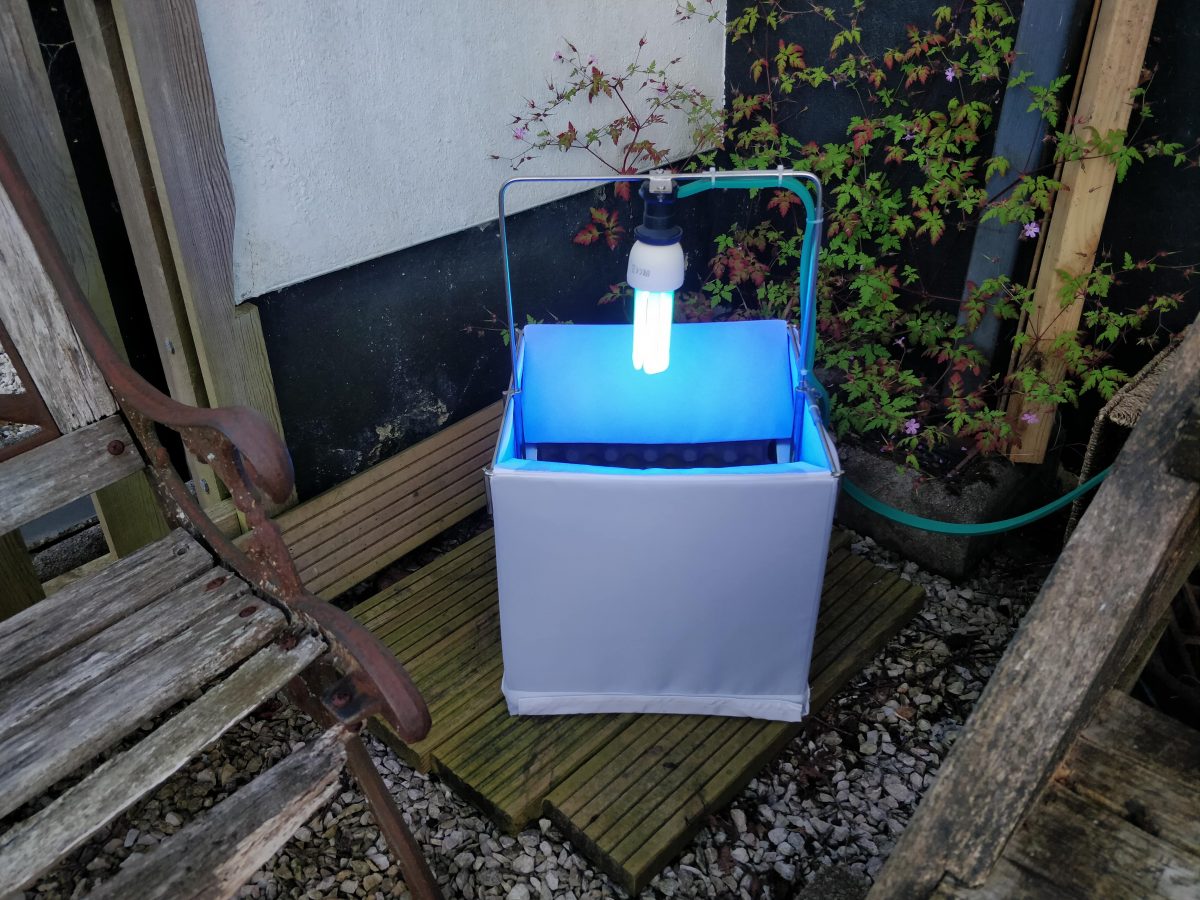
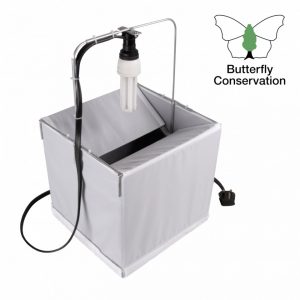
You can’t use it the field. Modify it to run off batteries, particularly USB Powerbanks, and I might be interested. I do the moth count beyond my garden.
Hi Jennifer,
We are looking into manufacturing a battery-powered version of the NHBS trap for exactly this reason. It would be great to be able to use the trap further afield!
That would be very popular. I love my trap but would like to use it in a different habitat than my garden
This is a great trap. I purchased it a month ago and have successfully trapped on about five nights. Species trapped – Elephant and Poplar hawk-moth, Yellow underwing, Marbled green, Buff tip, Scalloped oak, Heart and dart, Peppered, Emerald light, Green pug, Wax, Willow beauty, Common footman,
Grey scalloped bar.
So brilliant a start and so easy to set up. Worth buying small Plastic magnifying containers to retain moths to identify and the later release.
The trap works fantastically and has given my husband and I hours of pleasure identifying and recording the species found. Best books that we have found are Field guide to the moths of Great Britain and Ireland (Paul Waring and Martin Townsend) and British moths a photographic guide (Chris Manley). The website https://www.ukmoths.org.uk/ is an enormous help. If all fails and I am at a loss there is the wonderful Moth And Butterfly Identification Forum on Facebook which never fails!
I have used this trap for two nights this week. I’m really pleased with the quality and performance of the product. It’s giving me hours of head scratching while photographing and trying to I’d the species. I have definitely trapped a beautiful enormous Privet Month, a Buff Ermine, a Thorn of some type, Footmen, a pretty yellow Brimstone, a Magpie, and about 10 others that I’m struggling with. I recommend the trap- it’s really a good buy.
From the photos it appears this trap design does not include the Crafer modification included in later model Skinner-type traps, namely a downward-pointing flange or strip along the lower edge of the sloping entrance sheets. This will improve the retention of moths in the trap. See also “A guide to moth traps and their use” by Reg Fry & Paul Waring, available from Amazon and the Amateur Entomologists’ Society for methodology on how to compare the performance of this trap with other designs and how to get the best out of this trap once it has been modified to operate on batteries so that you can venture beyond the garden.
I’ve used this trap on around half a dozen occasions now, with some success. On a good night I get around 30 – 40 individuals, of around 20 – 25 species. Each time I’ve found something new for my garden list. I’ve had most success putting the trap out before dark, and leaving it until morning. I’ve also tried putting it out around midnight (after my dogs go to bed!) but had a much reduced catch – wind might have been a factor.
Species include Privet, Poplar and Elephant (large and small) Hawkmoth, Brimstone, Peppered, Mother Of Pearl, Small Magpie, Dun-bar, Buff Ermine, Buff-tip. Very pleased so far!
My 8 year old daughter and I have been using the NHBS Moth Trap since the end of May. It is the first time that either of us have ever tried moth trapping and we have used it about 25 times. We have caught a wide range of species in our back garden (102 species at last count) and had some wonderful encounters with many distinctive moths (e.g. Buff-tip, Poplar Hawk-moth, Iron Prominent, Elephant Hawk-moth, Ruby Tiger, Miller, Red Underwing, Old Lady, Sallow, Angle Shades, Lunar Underwing and Black Rustic). We have both also enjoyed the identification challenge presented by the more cryptic species.
We have made a few modifications to the trap and the trapping process over the last few months. We now use a white sheet on the ground and another draped over the washing line to create a screen and we have added two small cardboard flanges secured by miniature bull clips to the inside of the trap as Pail Waring has recommended. This does improve the retention in the trap and it would be nice to see this added to the standard model. We await the development of a battery powered version for use away from home with interest.
Hi Jason,
I’m so glad that you’ve been enjoying the trap – a really impressive range of species that you’ve caught and identified. Thank you for the suggestions and recommendations too, I will make sure to pass these on to our workshop team!
All the best,
Luanne
Easy to use in the field leisure battery and an inverter job done.